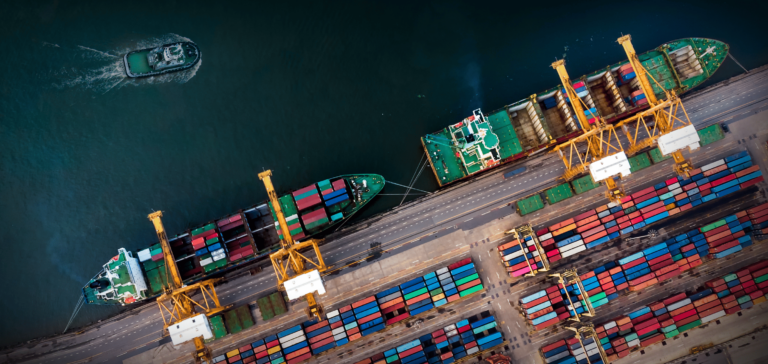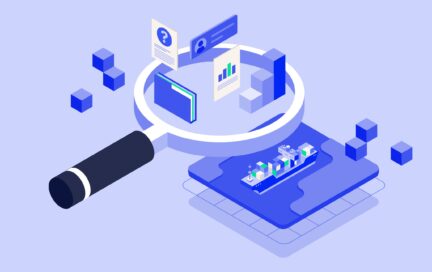The mode of transportation is an important consideration when planning the shipment process. Besides the costs, the urgency of the shipment, the value of the goods being shipped as well as the size and weight of the goods need to be evaluated when determining the form of transportation. In this article, we want to help you determine, which mode is best to transport your cargo and freight!
Sea Freight
Seaborne trade accounts for about 90% of the global trade, and as per UNCTAD, 1687 million tons (2015 estimate) were carried in around 177.6 million containers (2015 estimate) covering 998 billion ton-miles (2016 estimate).
Because of size or volume, there are several types of cargoes that cannot be or is economically unviable to move by other modes of transport than the sea.
Sea freight is a less expensive method of shipping goods, but the drawback is a longer transit time. Another benefit for sea freight is while size and weight may be an issue for air; it is not for sea freight.
Sea freight is used quite extensively for the movement of bulk commodities such as agri-products (wheat, maize, soya, etc.), coal, iron ore, or for wet bulk products such as crude oil and petroleum. Also, larger, odd-shaped items including engines and propellers may move via this mode as well, depending on how sensitive the delivery time is.
Sea freight is also a preferred mode of transport for the movement of high volume and heavy cargo such as minerals, metals, ores, steel coils, etc. which would be impossible to move by air freight.
Additionally, businesses are placing more emphasis on the environmental impact of shipping. An air freight service emits a higher amount of polluting gases with less space capacity compared to sea freight services which are considered a much greener transportation mode with a higher carrying capacity.
Key benefits of sea freight include
- Suitable for a wide range of products with long lead times
- Large volumes. A single, ultra-large container ship can carry +/-20,000 twenty-foot equivalent units (TEU)
- Most environmental friendly among all modes of transport
- Economical. Liner shipping is the most efficient mode of transport for goods
- Extensive coverage around the world
- Multiple carrier options for the shippers
Air Freight
Over the next 15 years, as the world GDP grows, there will be a demand for higher-value goods. As per Boeing’s 2016 – 2017 world air cargo forecast, there will be a proportionate growth in the value per ton of total traded goods around the world.
To meet the demand for growth, world air cargo traffic is forecasted to grow an average of 4.2 percent per year.
Air freight is a critical mode of transport. It serves markets and supply chains that demand speed. One of the greatest examples goes back to 1997 when Apple began innovating on the nitty-gritty details of supply-chain management. Almost immediately upon Steve Jobs’ return. At the time, most computer manufacturers transported products by sea, a far cheaper option than air freight.
Steve Jobs took advantage of the benefit of air freight and used an innovative strategy. He paid $50 million to buy up all the available holiday air freight space to ensure that the company’s new, translucent blue iMacs would be widely available during the Christmas season giving them a massive competitive advantage over their rivals. – “It was an ‘Oh s-’ moment,” recalls former HP supply chain chief Mike Fawkes.”
Other industries such as the automotive and retail industries also utilize air freight to achieve ‘just-in-time’ (JIT) inventory replenishment. JIT option allows stores, and production lines to place order fulfillment based on demand as, and when required. It provides greater flexibility and reduces inventory and storage costs.
Also, perishable goods such as foods, flowers, and some pharmaceuticals also take advantage of shorter transit times. Another positive for air freight is that there’s less handling of cargo overall, so the likelihood of damage or theft is less likely when utilizing air.
But air freight also has its own disadvantages such as being one of the most expensive due to the requirement of speed and the fuel that is used.
It also has its size and weight limitations. Regulatory bodies limit what can and cannot be transported by air, and as such, oddly shaped or very large items may be more suitable for other modes of transport.
Key benefits of air freight include
- Quick transit
- Less handling of cargo
- Less documentation
- Reliable arrival and departures
- Enhanced level of security for your cargo
Rail Freight
Another mode of transport which is also considered a ‘green’ option is rail freight. Trains burn less fuel per ton-mile than road vehicles and a train, which can have as many as 100 wagons, only needs one driver. There are, however, some additional costs that are incurred in a rail journey: at each end of the rail transit, a road delivery will be needed, and there will be a lift cost to transfer the container between the train and the road vehicle.
On average, longer journeys tend to be less expensive by rail, and shorter journeys are less costly by road. Where the point of cost neutrality comes is governed by many factors which are route and commodity-specific, but in general, the point of cost neutrality can be expected to lie in the range of 130 to 150 miles.
In 2015, the first freight train carrying ISO freight containers from China arrived in the Port of Rotterdam in 18 days as against the normal 44 odd days by the sea.
This movement of containerized cargo by rail from China to logistics hubs in Europe such as the Netherlands, and the UK is seen as a significant step in the development of trade between the two continents. It has encouraged multinationals such as Hewlett-Packard and Ricoh to use the route from Europe to China for their cargoes.
The Manager of European Transport at Ricoh notes that if one can set up effective planning, rail is a relatively quick mode of transport taking only 20 days to China. In addition, the move by rail also has some advantages such as all containers being transported to the location in one go, while being environmentally friendly as a train releases far less CO2 than a plane.
Key benefits of rail freight include
- Reliable transit times and schedules
- Railroads are the most efficient form of land transportation. One train can haul the equivalent of over 400 trucks
- Fast and cost-effective deliveries over long distances. Typically over 500 miles
- Traditionally, rail has a strong safety record.
- Helps in alleviating road congestion, thus lowering emissions
Road Freight
Road freight is one of the most common of all modes of transportation. It is widely used in continents such as Europe, Africa, and North America. The single customs document process provides a seamless movement of goods even across various states and countries.
Key benefits of road freight include
- Cost-effectiveness
- Quick and scheduled delivery
- Local, over border, long or short haul deliveries even in rural areas
- Flexible service
- Saving in Packing Cost compared to other modes
- Track and trace cargo and truck
- Complete door-to-door service is one of the more economical means of transport.
However, truck transport is limited somewhat as to what it can carry by the size of the vehicles used and by size and weight restrictions. Another limitation is that it is affected by weather, road conditions, and traffic.
Multimodal Transport
Another option to keep in mind is multimodal solutions – the utilization of more than one mode of transport.
Multimodal is a combination of different modes of transportation such as rail, road, and sea which allows the customer to cost-effectively manage shipments from start to end, ensuring optimum care and efficiency every step of the way.
One such example is the cross-region rail network combined with trucks. Providers including DHL, Geodis, UPS, and DB Schenker are offering such a solution along China’s Silk Road network.
According to UPS, the service can offer savings of up to 65% versus air freight costs while providing transit times up to 40% faster than standard ocean movements.
Sea-Air is another example of multimodal transport. The service is considered less expensive than air and quicker than ocean service.
An alternate solution to pure air or ocean, Sea-Air provides the global transportation industry time and cost savings along with eco-friendliness.
Sometimes using this mode of transport helps to avoid demurrage fees.
Key benefits of multimodal transport include
- Cargo can be moved to any part of the world using multiple modes of transport
- Reduces the distance for the goods between the manufacturer and the consumer
- Customers can deal with one entity to handle all modes of transport under one document
- Efficient and cost-effective delivery options
Conclusion – What mode of transportation should you use?
There are numerous options for transporting goods, and there may not be one solution for your transportation needs. Each mode of transport has its advantages and disadvantages. Prioritizing your needs, understanding your shipment, and comparing costs are important when planning your shipment and choosing the best mode of transport.
If you’re looking for a strong logistics partner to manage your freight, our team of experts is ready to help you find the right solution.







